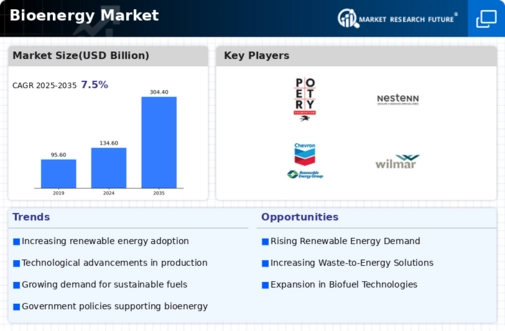Market Share
Bioenergy Market Share Analysis
In the competitive landscape of the bioenergy market, companies employ various strategies to position themselves and capture market share. One prevalent approach is differentiation, where companies aim to distinguish their products or services from competitors'. This can be achieved through offering unique features, such as higher energy efficiency, lower emissions, or innovative production processes. By highlighting these distinct attributes, companies can attract environmentally conscious consumers or those seeking enhanced performance. Additionally, companies may focus on cost leadership, striving to offer bioenergy solutions at lower prices than competitors. This strategy aims to appeal to price-sensitive consumers and gain a larger market share through affordability.
Another crucial aspect of market share positioning in the bioenergy sector is market segmentation. Companies identify specific customer segments with distinct needs and preferences and tailor their offerings accordingly. For instance, they may target residential consumers looking for renewable energy options for their homes, or industrial clients seeking large-scale bioenergy solutions to reduce their carbon footprint. By understanding the unique requirements of each segment, companies can effectively allocate resources and develop targeted marketing campaigns to capture a larger share of the market.
Furthermore, strategic partnerships play a vital role in market share positioning within the bioenergy industry. Collaborating with complementary businesses, such as agricultural producers or technology providers, can enable companies to leverage each other's strengths and expand their reach. For example, a bioenergy company might partner with farmers to secure a steady supply of feedstock or collaborate with research institutions to develop cutting-edge technologies. These partnerships not only enhance the company's capabilities but also create opportunities for joint marketing efforts and access to new customer bases.
In addition to differentiation, cost leadership, market segmentation, and strategic partnerships, innovation is another key driver of market share positioning in the bioenergy market. Companies that invest in research and development to improve their products, optimize production processes, or explore alternative feedstock sources can gain a competitive edge. By offering superior or more sustainable solutions, these innovators can attract environmentally conscious consumers and establish themselves as leaders in the industry. Moreover, continuous innovation helps companies stay ahead of competitors and adapt to changing market dynamics, securing their position in the market.
Effective branding and marketing are also essential for successful market share positioning in the bioenergy sector. Companies need to develop strong brand identities that resonate with their target audience and differentiate them from competitors. This includes communicating their values, commitment to sustainability, and the benefits of their bioenergy solutions effectively. Through targeted marketing campaigns across various channels, such as social media, websites, and industry events, companies can raise awareness of their brand and attract potential customers.
Lastly, regulatory compliance and government policies play a significant role in shaping market share positioning within the bioenergy industry. Companies must stay abreast of regulations related to renewable energy, emissions standards, and incentives or subsidies for bioenergy production. By ensuring compliance with these regulations and actively participating in policy advocacy efforts, companies can mitigate risks and capitalize on opportunities in the market. Moreover, government support for renewable energy initiatives can create a favorable market environment for bioenergy companies, driving demand and facilitating market share expansion.
Market share positioning strategies in the bioenergy market encompass a range of approaches, including differentiation, cost leadership, market segmentation, strategic partnerships, innovation, branding, marketing, and regulatory compliance. By employing these strategies effectively, companies can enhance their competitive advantage, attract customers, and capture a larger share of the growing bioenergy market.







Leave a Comment